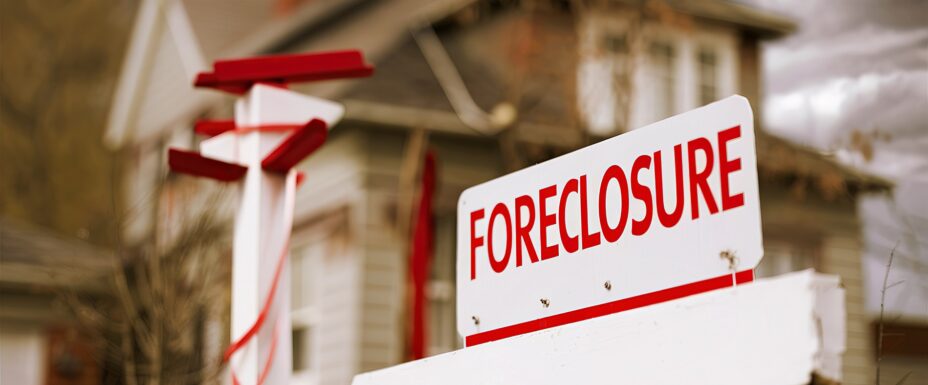What if an Appraisal Is Lower than the Offer?
Reviewed by: Brandon Brown
You’ve accepted an offer, the contract’s in motion, and everything seems to be falling into place, until the appraisal report lands with a thud. The number is lower than expected, and suddenly, your smooth house sale just hit a bump. If you’re a seller, this can feel like a punch to the gut. If you’re a buyer, it can throw your financing into question. And if you’re working through the real estate process for the first time, a low appraisal might sound like a deal-breaker. But don’t panic—there are clear, manageable steps you can take to move forward. In this guide, we’ll break down why low appraisals happen, what they mean for your mortgage or house sale, and what options both sellers and buyers have to keep the deal on track—or pivot confidently.
What Is a Home Appraisal?
A home appraisal is like a professional reality check on the price of a house. Before a lender agrees to fund a buyer’s mortgage loan, they need to know the property is actually worth what the buyer is offering. That’s where a licensed appraiser comes in. Here’s how it works:
- The appraiser conducts an inspection of the home and evaluates its condition, location, square footage, amenities, and recent upgrades.
- They compare the property to recently sold homes nearby (also known as comparables or comps).
- Using all this data, they assign a fair market value to the home, the appraised value.
This process protects both the buyer and the lender by ensuring the house isn’t being overpaid for based on current market value. But sometimes, that appraised value comes in lower than the agreed-upon purchase price. That’s when things get complicated.
What Is a Low Appraisal?
A low appraisal happens when the appraiser claims that a home’s value is less than the offer price that the buyer and seller agreed on. Let’s say the buyer agrees to purchase a home for $500,000, but the home appraisal comes in at $470,000. That $30,000 appraisal gap is now a problem, because lenders typically won’t issue a mortgage for more than the appraised amount. Here’s what that means:
- The buyer now needs to either pay the difference in cash, renegotiate the sale price, or risk the deal falling apart.
- The seller might be forced to accept a lower offer or put the home back on the market.
- Both parties might face delays, contract revisions, or even a cancelled transaction.
Low appraisals aren’t just frustrating, they can derail your plans entirely if you don’t know how to respond.
What Causes Low Appraisals?
Low appraisals aren’t random—they usually stem from a handful of common issues. Understanding these can help you avoid them or prepare better next time around. Here’s how:
1. Rising Market Conditions
In a hot housing market, prices can climb faster than appraisers can keep up. If your neighborhood’s home values are skyrocketing, the comps used in the appraisal may already be outdated—especially if they’re from a few months back. This time lag can skew the appraised value downward, even if buyer demand is surging.
2. An Overpriced Home
Sometimes, sellers set an ambitious asking price without solid data to back it up. If your listing price is more about wishful thinking than actual market value, don’t be surprised if the appraisal comes in low. Buyers might be willing to stretch, but lenders won’t take the bait unless the value is justified. So, if you’re not sure how to price your home for today’s market, start by researching comparable sales (of houses nearby) and understanding buyer expectations.
3. Poor Evaluation of the Property
Maybe your home has upgrades the appraiser didn’t fully account for, or perhaps they missed features that affect home value. Alternatively, if your home has condition issues, outdated systems, or lacks curb appeal, it might underperform in the evaluation. So, for instance, if you’re selling a house with fire damage or selling a house with mold, it’s important to be upfront about the extent of the issue and how it affects the home’s value.
4. Appraiser Error
Yes, appraisers are professionals—but they’re still human. Mistakes happen. They might pull comps that aren’t truly comparable, mismeasure the property, or fail to consider improvements. These errors can lead to an incorrect (and frustratingly low) appraised value.
What Can You Do if the Appraisal Comes In Low?
A low appraisal doesn’t have to be the end of the road. Whether you’re the buyer or the seller, you’ve got options—and knowing what to do next can help save the deal (and your sanity).
Cover the Difference in Cash
If the buyer really wants the property, one solution is to pay the difference between the appraised value and the purchase price out-of-pocket. This approach keeps the loan moving forward, but not everyone has tens of thousands in spare cash lying around. Still, in competitive markets where bidding wars drive prices above market value, this can be the cleanest way to move ahead without renegotiating.
Appeal the Appraisal
Sometimes, the appraisal is just off. Maybe the appraiser missed updates, overlooked stronger comparables, or relied on flawed data. In these cases, the buyer or seller (usually through their agent) can challenge the report by submitting better comps or documentation and requesting a second look. While not guaranteed, this approach can result in a revised home appraisal, especially if clear errors are found.
Negotiate With the Seller
If you’re the buyer and can’t cover the appraisal gap, you might ask the seller to reduce the sale price. Likewise, both parties can meet in the middle to share the cost difference. It’s not ideal, but if the buyer seller relationship is cooperative—and both parties are motivated—this route can keep the transaction alive.
Cancel the Deal
Sometimes, despite best efforts, the numbers just don’t work out. If your contract includes an appraisal contingency, this gives the buyer a legal out if the home’s appraised value comes in too low. While disappointing, walking away may be better than overpaying or overextending your budget.
How Can Sellers Prevent a Low Appraisal?
As a homeowner, you can’t control the market, but you can set yourself up for success by giving the appraiser everything they need to make a fair assessment.
Show Your Comps
Don’t leave the appraiser guessing. Work with your real estate agent to pull a list of strong comparable home sales in your area, ideally ones that support your asking price. Have this info ready during the home appraisal visit.
Provide Receipts and Documentation
Make it easy for the appraiser to see the value of your upgrades. Got a new roof, kitchen remodel, or recent HVAC replacement? Share receipts, permits, and any professional assessments that prove what your home is worth. Bonus tip: Tidy up before the appraisal. While it’s not supposed to influence the outcome, a clean, well-maintained house can leave a better impression.
Navigate Appraisal Challenges with FlipSplit Today
Low appraisals can throw even the best-laid home sale plans into disarray. Whether you’re the seller scrambling to salvage a deal, or the buyer caught in a financing bind, it helps to know your options and have a backup plan. At FlipSplit, we take the stress out of selling by skipping the guesswork entirely. No worrying about low appraisals, flaky buyers, or the rollercoaster of traditional real estate. Just a fair offer, flexible timelines, and a transparent process from day one. Facing appraisal challenges? FlipSplit can help you sell your home fast, without worrying about repair requests, showings, or surprises. Get a quick, no-obligation cash offer today—and move forward on your terms.

Reviewed by: Brandon Brown
As a long-time Asset Manager, Investor, Real Estate Agent, and Broker/Owner of BayBrook Realty in Orange County, Brandon Brown is one of FlipSplit’s lead Real Estate experts. Having worked on over 2,000+ real estate transactions, Brandon brings a depth of knowledge that ensures clients are appropriately treated with honesty and integrity. His insights and advice have been published in numerous blogs beyond FlipSplit, and he keeps a close eye on market trends and statistics, which are updated weekly on his social media pages. Outside work, you can find him participating and serving at church, cycling, mountain biking, surfing around Orange County and beyond, and enjoying time with his wife and two daughters.










